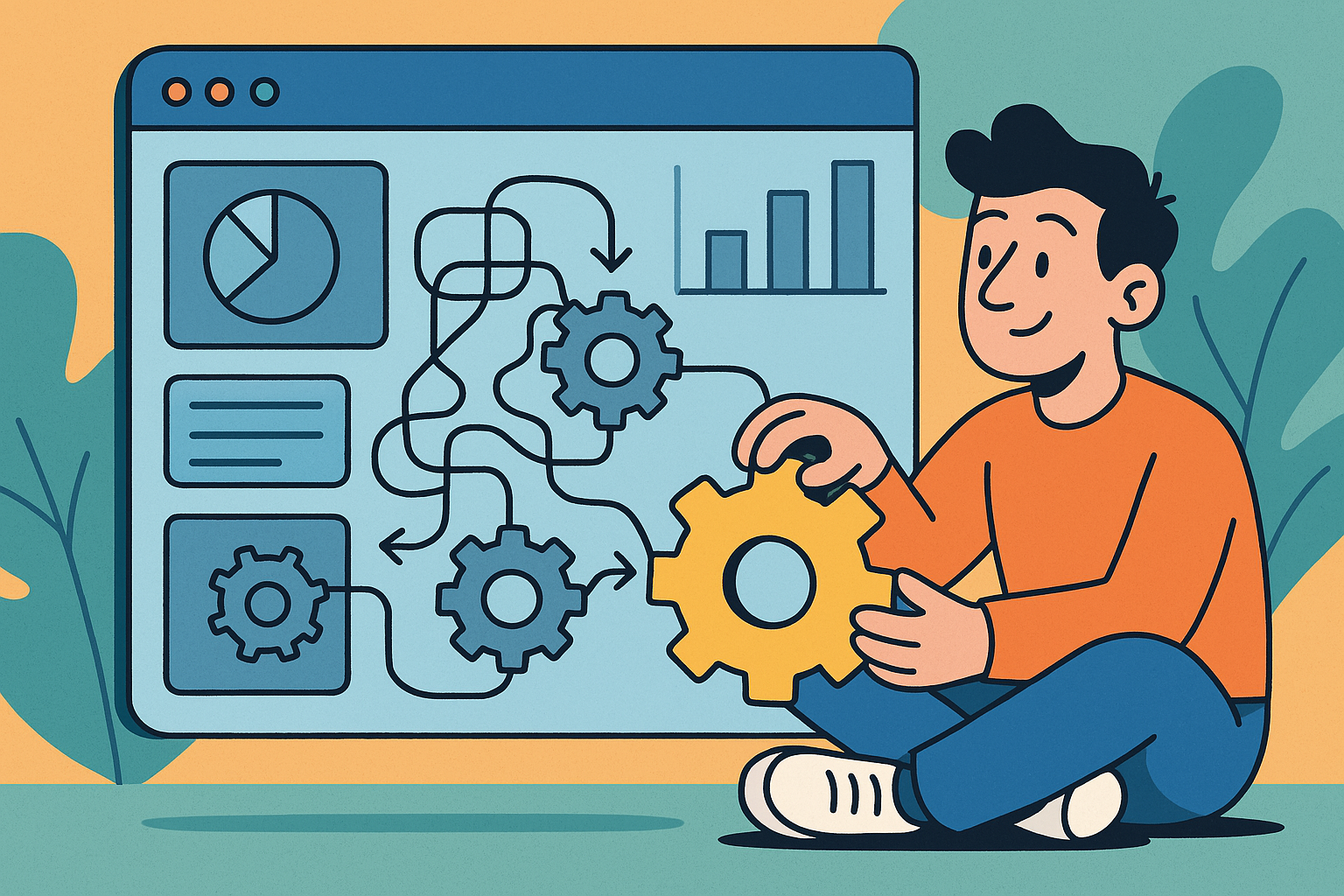Integration Patterns in Enterprise Applications are the bedrock of modern businesses, enabling disparate systems to function seamlessly. These patterns act as the connecting fabric of information flow, creating a cohesive and robust enterprise environment. Understanding these patterns is not merely a technical exercise but a journey through the architectural artistry that orchestrates various applications in unison.
Historical context of integration patterns
Understanding the historical context of integration patterns requires a journey back to the early days of computing and tracing the technological advancements that have shaped today's complex enterprise systems.
In the beginning, there was data, but no simple way to share it. The early phase of computer systems saw the use of file-based integration, where data was shared via files transferred between systems. This rudimentary form of integration was manual, cumbersome, and error-prone. It laid the foundation for the need for more sophisticated methods of integration.
With the emergence of relational databases and the Structured Query Language (SQL), integration began to take on a more structured form. Systems could now query each other's data, allowing for more direct communication and data sharing. This era saw the birth of more formalized data integration methods like ETL (Extract, Transform, Load), providing the means to gather, transform, and consolidate data from various sources.
The explosion of the Internet in the late 1990s ushered in a new era of web-based integration. Technologies like SOAP (Simple Object Access Protocol) provided the means for systems to communicate over the web. Enterprises started to see the benefits of connecting not only internally but also with partners and customers across the globe. This period marked the beginning of real interconnectivity and laid the groundwork for today's API economy.
SOA brought about a significant shift in integration thinking. Instead of focusing on data alone, SOA emphasized the importance of reusable services. It allowed different parts of an organization to expose functionalities as services that others could consume. This shift from data-centric to service-centric integration paved the way for a more agile and responsive enterprise architecture.
The advent of cloud computing and the proliferation of APIs have ushered in the modern era of integration patterns. From iPaaS to microservices, serverless computing, and event-driven architectures, the integration landscape has become diverse, complex, and incredibly powerful. The shift to the cloud has enabled a level of scalability and agility that was previously unimaginable.
As we look to the future, integration continues to evolve. The rise of technologies like artificial intelligence, edge computing, and quantum computing offers new possibilities and challenges. Integration patterns of the future will likely be more dynamic, intelligent, and adaptive, continuously reshaping themselves to meet the ever-changing demands of business and technology.
Types of integration patterns in enterprise systems
Integration patterns in enterprise applications have evolved to become highly nuanced, offering different solutions tailored to various organizational needs. Let's explore these patterns in more depth.
1. Point-to-point integration
Point-to-Point Integration is the most fundamental form of connecting two systems. In this pattern, systems A and B are directly connected, allowing immediate data transfer. An example might be a direct connection between a CRM system and an email marketing platform, where new leads are directly transferred for campaigns.
While the simplicity is advantageous, it becomes increasingly complex as more systems are added, leading to a tangled web that's hard to maintain and lacks scalability.
2. Hub-and-spoke integration
The hub-and-spoke pattern introduces a central hub, allowing multiple systems to connect through it. This centralization reduces complexity. An organization with different departments using various tools can benefit from this pattern by connecting everything through a central integration hub.
A real-world example is an airport's flight scheduling system, where different airlines (spokes) connect to a central system (hub) to coordinate flight schedules.
3. Publish-subscribe pattern
The publish-subscribe pattern offers flexibility through one-to-many communication. An application publishes a message, and multiple subscribers can consume it. For instance, in an e-commerce system, when a new product is added, multiple systems like inventory, marketing, and sales can subscribe to this event.
This pattern ensures that all relevant systems are notified simultaneously without direct connection to the publishing system, thus achieving a higher level of decoupling.
4. Service-oriented integration
Service-Oriented Integration is built on the principles of Service-Oriented Architecture (SOA), where services are exposed and consumed by different parts of the enterprise. A financial institution, for example, may expose a credit-checking service that various departments can consume to verify customer creditworthiness.
Martin Fowler once stated that "SOA shifts the focus from code to data, from application development to data integration." This pattern underscores the importance of reusable services, allowing greater flexibility and alignment with business needs.
5. Data integration patterns
Data integration patterns like ETL (Extract, Transform, Load), ELT (Extract, Load, Transform), and data normalization are fundamental in managing data flow. An example could be an analytics system in a large retail company, where ETL processes are used to gather data from various sales channels, transform it into a consistent format, and load it into a data warehouse for analysis.
These patterns serve as the backbone of data management, ensuring that data is appropriately processed, aligned, and ready for consumption.
6. API integration patterns
API Integration patterns, leveraging REST APIs, GraphQL, and OpenAPI, have become integral in modern enterprises. A classic example is social media login functionality on various websites. By integrating with social media platforms through their APIs, websites enable users to log in using their social media credentials.
These API patterns promote interoperability, allow rapid development, and offer a wide range of functionalities. As Marc Andreessen rightly noted, "Software is eating the world," and APIs provide the silverware, enabling different software systems to interact seamlessly.
Integration patterns in cloud computing
The advent of cloud computing has introduced new horizons for integration patterns. The landscape is broader, more complex, and yet infused with potential, allowing enterprises to achieve unprecedented levels of agility and scalability. Let's delve into how integration patterns are adapting and thriving in the cloud era.
1. Cloud-native integration patterns
With businesses increasingly migrating to the cloud, integration patterns have evolved to become cloud-native. These patterns are designed to work seamlessly within cloud environments, capitalizing on the benefits of elasticity, resilience, and flexibility. One prominent example is the use of container orchestration tools like Kubernetes, which enable the efficient deployment and management of microservices in a cloud environment.
2. Integration platform as a service (iPaaS)
iPaaS is a suite of cloud services that enable the development, execution, and governance of integration flows. It provides a unified way to integrate on-premises systems with cloud services. For example, a business might use iPaaS to synchronize its on-premises ERP system with a cloud-based CRM system, ensuring data consistency across both platforms.
The beauty of iPaaS lies in its ability to offer integration as a managed service, reducing the overhead and complexity typically associated with integration efforts.
3. Hybrid integration patterns
In a world where some systems reside in the cloud and others on-premises, hybrid integration patterns offer a bridge between these two realms. They allow data and processes to flow smoothly between cloud and on-premises environments. An organization might leverage hybrid integration to connect its on-premises data warehouse with cloud-based analytics tools, creating a seamless flow of data for real-time insights.
4. Serverless integration patterns
The serverless computing paradigm, where the infrastructure is entirely managed by the cloud provider, has given rise to unique integration patterns. Functions as a Service (FaaS) enable small, single-purpose functions to be deployed and run in the cloud. An e-commerce site, for example, might use serverless functions to process payment transactions, scaling automatically during peak shopping periods.
Serverless integration allows for highly scalable and cost-effective solutions, with the infrastructure adapting to the needs of the application.
5. Event-driven integration in the cloud
Event-driven architecture (EDA) is another integration pattern that has found its place in the cloud. This pattern enables systems to respond to real-time events. A smart city might use event-driven integration to monitor traffic patterns, reacting to congestion by adjusting traffic light timings.
This pattern underscores the real-time responsiveness and adaptability of cloud integrations, allowing for more dynamic and interactive experiences.
6. Security and compliance in cloud integration patterns
With the expansion of cloud integration comes the heightened responsibility of ensuring security and compliance. Integration patterns must account for various regulatory requirements and ensure that data is transmitted and stored securely. A healthcare provider leveraging cloud integration must adhere to regulations like HIPAA, ensuring patient data confidentiality.
Integrating across the cloud demands a robust security architecture, vigilant monitoring, and strict adherence to regulatory requirements.
Integration and digital transformation
Integration patterns are not just about connecting systems; they are the enablers of digital transformation. They foster innovation by providing a structured way for systems to interact, thus making the transformation journey smooth and cohesive.
Security considerations in integration patterns
With greater integration comes the responsibility of ensuring security. The API security, authentication, and encryption must be rigorously designed to ensure that the integrity of the connected systems remains uncompromised. As cybersecurity expert Bruce Schneier once stated, "Security is a process, not a product," reminding us that constant vigilance is necessary in this integrated world.
Case studies and real-world applications
The real power of integration patterns becomes evident through practical applications. Leading organizations have showcased the potential of integration in revolutionizing industries, from healthcare to finance.
One such example is how a global bank leveraged hub-and-spoke integration to unify its operations across different regions. By using this pattern, they not only streamlined the processes but also enhanced the customer experience.
Future trends and predictive analysis
Looking ahead, integration patterns are expected to evolve, embracing newer technologies like Artificial Intelligence and Machine Learning. The convergence of integration with intelligent algorithms will lead to smarter decision-making processes.
James Governor, co-founder of RedMonk, once said, "Integration is harder than you think, and it's going to be even more critical in the future," highlighting the never-ending journey of integration and its increasing complexity.
The timeless evolution of integration patterns
Integration Patterns in Enterprise Applications are an intricate, fascinating world that reflects the evolution of business and technology. From simple point-to-point connections to complex service-oriented architectures, these patterns are the architects of our digital ecosystem.
The ever-changing nature of technology will continue to shape integration patterns, but their essence will remain the same – creating harmony among disparate systems. It's a story that began decades ago and will continue to unfold, crafting the symphony of enterprise applications
 is now
is now


